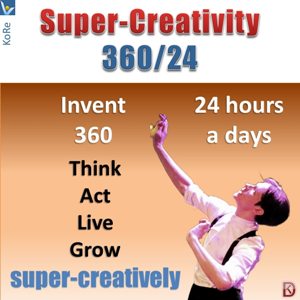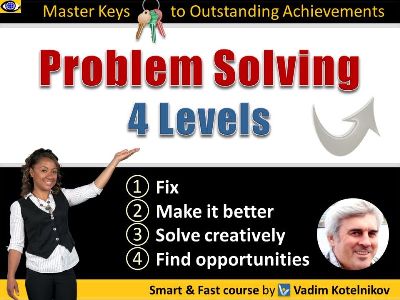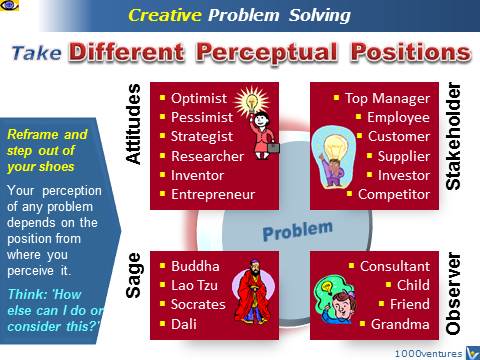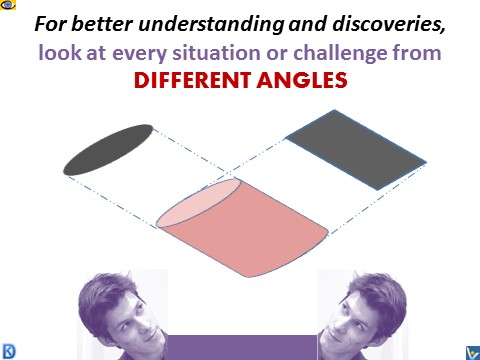| |
Challenge assumptions! Neither a thing is right because you do it
nor a method is good because you use it. "It ain't what you don't know
that gets you into trouble. It's what you know for sure that just ain't
so," said
Mark Twain. Everything
can and should be improved – keep
looking for
improvement and innovation opportunities!
 Amazing
Thinker 360
Amazing
Thinker 360
|
|
 |
 |
If you would be a real
seeker after
truth, it is necessary that at least once in your
life you doubt, as far as possible, all things. |
René Descartes |
| |
How To
Spot a Problem
To spot a problem, adopt the
Beginner's Mind. Play a child or an external observer. Pretend you are a
complete outsider and ask questions like 'Why do you do it this way at all?'
Use the
'5-Why' technique to discover the route cause of the problem. |
|
 |
| |
|
"A
ship in port is safe; but that
is not what ships are built for.
Sail out to sea and do new
things."
~ Grace
Hopper
|
|
|
 |
|
Take Perceptions
Into Account
"We see things not as they are, but as
we are." ~ Henry Tomlison
A situation perceived is not the
reality. Recognize that you and everyone else have ingrained
assumptions about every situation.
Check your assumptions. |
|
| |
 Problem
Solving: 4 Levels
Problem
Solving: 4 Levels
Play a
Child: ask plenty of
'Why?', 'Why Not?" and 'What
If?' questions in order to
discover different perceptions
and assumptions and challenge
them.
Imagine the Opposite:
consider what the experts advise
and then consider doing the
opposite.
|
|
|
| |
|
"He who knows only his own side
of the case knows little of
that."
~ John
Stuart Mill.
|
|
|
| |
Consider an issue from
many different angles to gain a
holistic view of of the problem to be addressed. It was by taking a
different view of a traditional business that major
 innovations
innovations
were achieved.
|
|
 |
|
|
|
Unpackage the problem to
understand it better and solve
easier. Reduce a situation to
its simplest components in order
to take it out of your
environment.
STRIDES Models for
 solving
complex problems and
McKinsey approach to
strategic problem solving may
help
managers
address complex and
strategic issues.
solving
complex problems and
McKinsey approach to
strategic problem solving may
help
managers
address complex and
strategic issues.
|
|
|